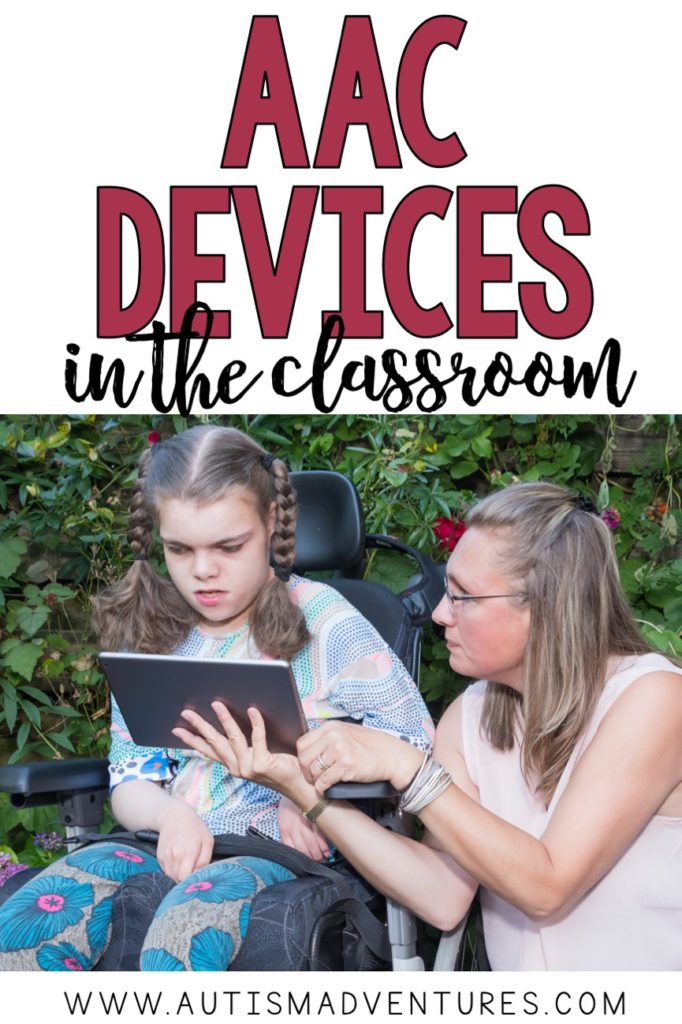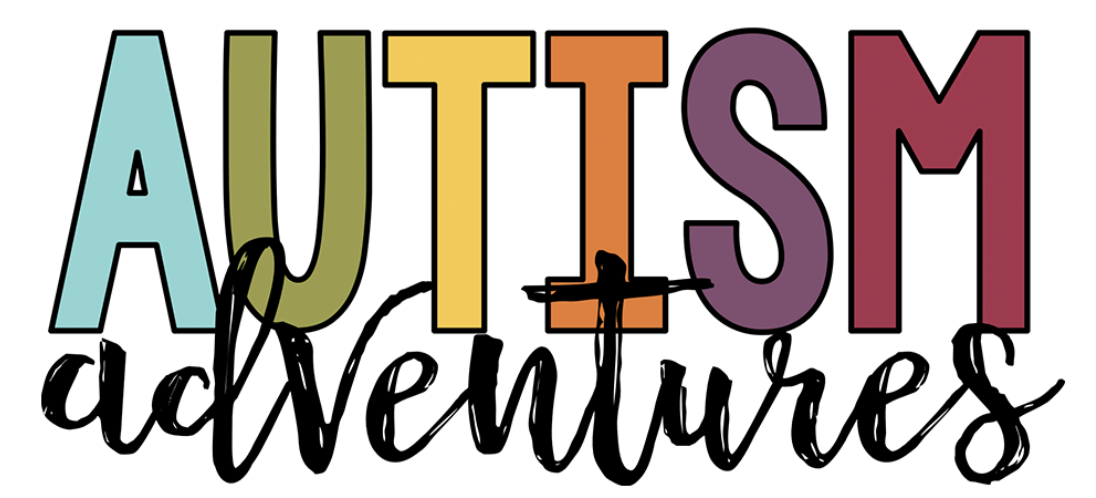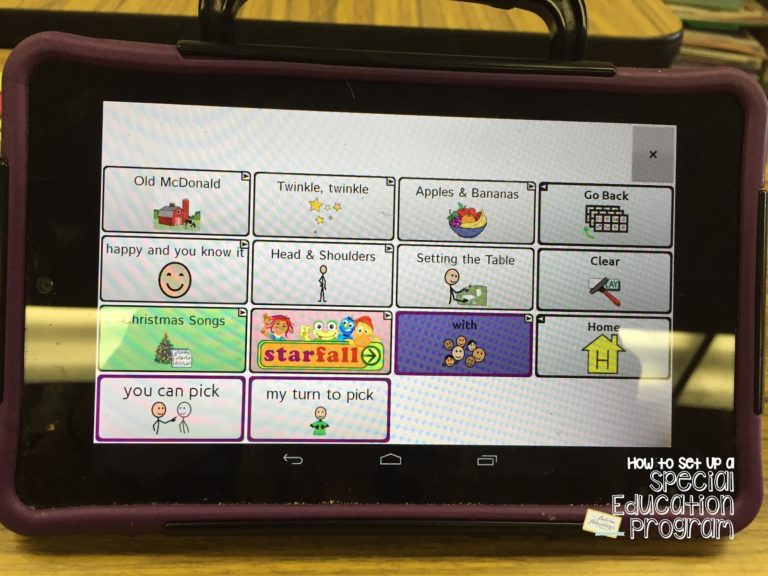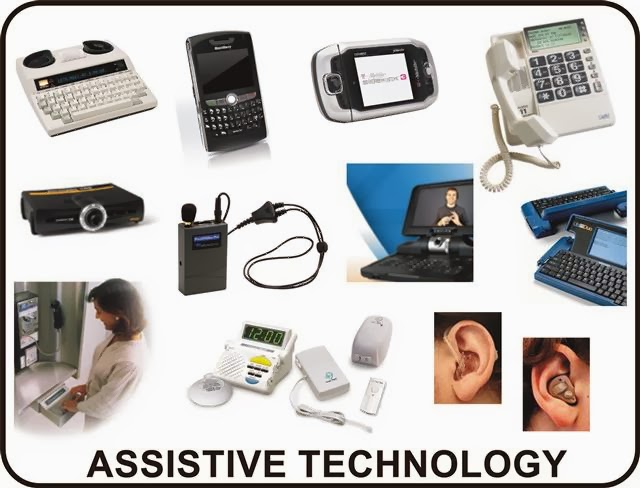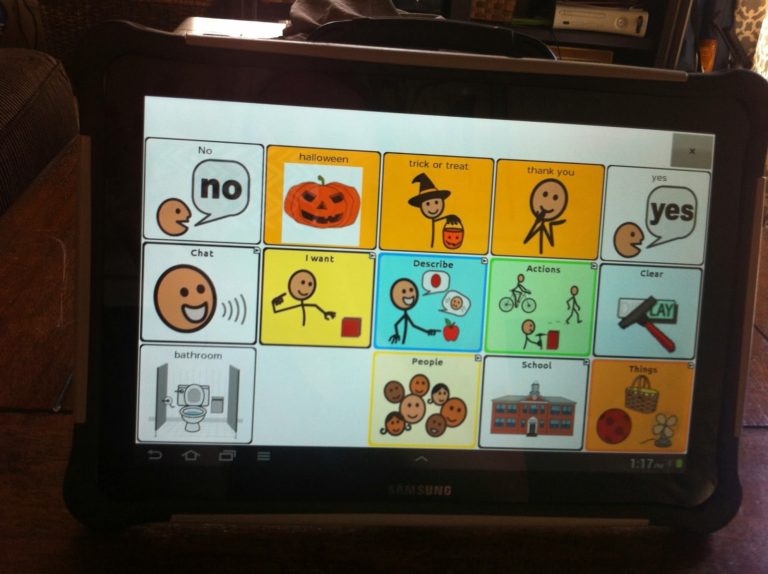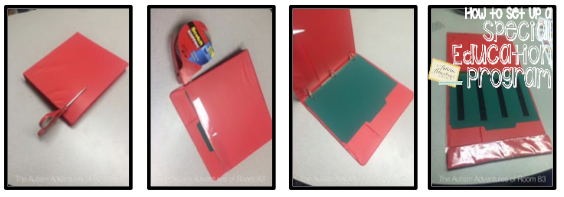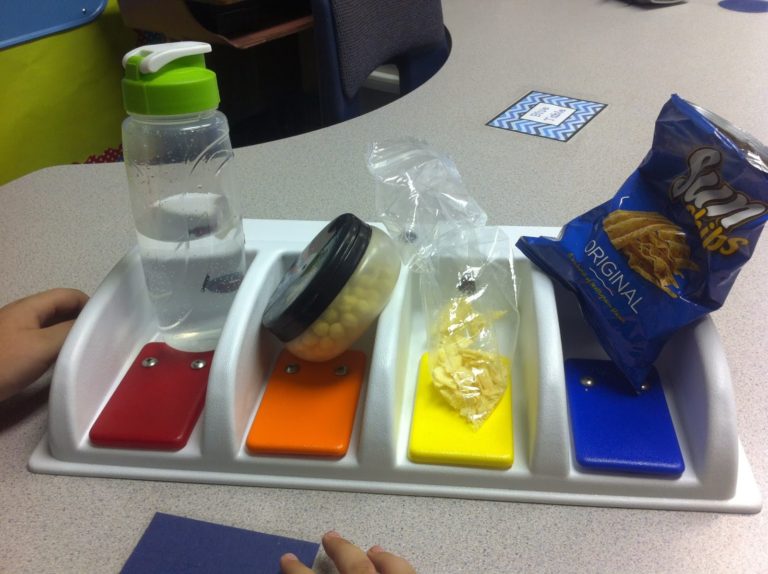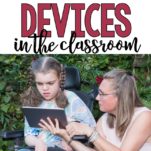Communication Devices in the Classroom
Technology is everywhere in our world today. It is no surprise that it has made its way into our classrooms. Students across the country are using technology to complete their schoolwork, read stories, play educational games, and much more. Many schools are even providing students with tablets or laptops as a means to complete learning activities in and outside of school. Today’s blog post is all about implementing communication devices in the classroom.
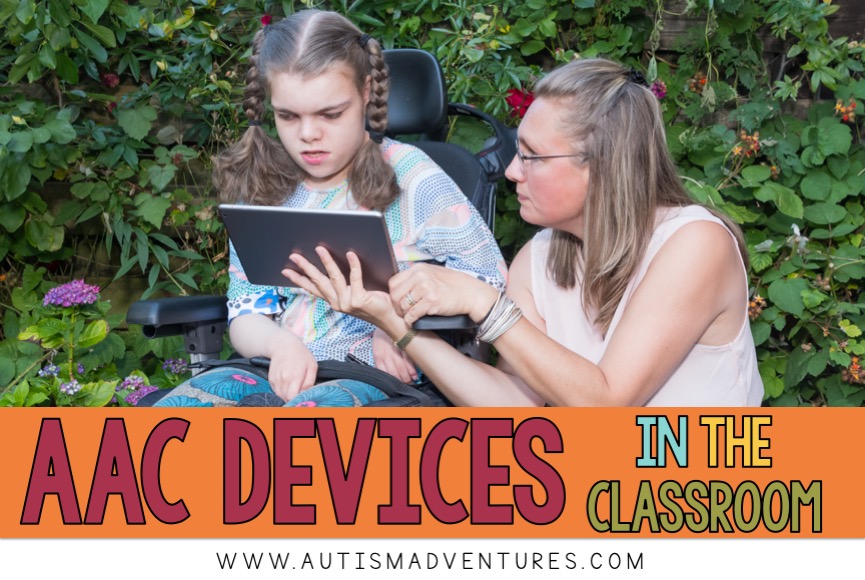
Technology in the Classroom
Technology is being used widespread for educational purposes. However for some of our students, the use of technology at school is much more than a way to complete schoolwork each day. For students with severe speech or language difficulties, technology can provide a way to communicate. Augmentative and Alternative Communication (AAC) refers to communication using sign language, gestures, writing, low-tech (e.g. Picture exchange systems) and high-tech devices. To read more about different types of devices in the classroom, read more here.
Today, there are several “high-tech” applications and devices available. These offer a speech output system for students that may require technology to communicate. Student are able to select icons, type words, and create sentences to communicate with those around them using speech output systems.
It Is Is Their Voice
For students with high-tech communication devices, it is important to remember that this device is their voice. Although it may look like any other tablet or computer, it is providing this child with a means to communicate. Without this device, they would not be able to talk. When the student is without their AAC system, they are without their voice.
Many students have communication devices in the classroom. It is important that these follow them throughout their day. Devices should not only be used when the rest of the students in the class are using technology. It should be something that is available to the student at all times. If they have a question, comment, response, like the rest of the students in the class, the child with the AAC should have access to their device to allow them to participate. This technology should follow the students between classes. It should also go with them to specials, to lunch, recess, etc. Our students are provided with endless opportunities throughout the school day to communicate. It is important that the AAC device stays with our students with severe speech and language needs at all times. This is so that they have these same opportunities to speak.
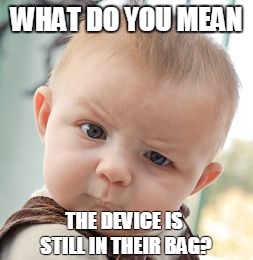
Introducing the Devices
We all know that our students are going to be drawn to technology. It is especially exciting if an application speaks! However, the AAC device should be used by the student that requires the device to communicate only. It is important to always remember that this is the students voice and their classmates should respect this. The device should not be passed around or shared amongst students. This is because this is the child’s voice. An AAC device should never be considered a toy.
It may be beneficial to introduce the class to the students communication device. Let them know what it is used for and why it is there. You can have the student talk to the class using their device. This could be a great way to help the child be proud of their own device. This may help the students understand the importance of the device to the student in need. It will also prevent them from wanting to use it themselves.

IEP Team Collaboration
It is important to set students that are using communication technology up for success. It may be beneficial to meet with your schools Speech-Language Pathologist. They will be able to help you obtain a better understanding of the application or device. This collaboration will also be beneficial to learn some ways to edit and troubleshoot when working with the device. Having an understanding of the devices capabilities will greatly improve your ability to meet the needs of your student. It will also assist when explaining the device to other students. If you are using communication devices in the classroom, you need to be collaborating!
When a student has an AAC device, they will most likely have IEP goals to support it. If this is the case, collaboration has to happen! A Speech and Language Therapist will not be able to facilitate communication opportunities all day, every day. This is where the IEP team will greatly depend on the classroom teacher to provide these opportunities. With support of the speech and language therapist of course.
Managing Student Behaviors
Now, I am sure if you’ve worked with a student with an AAC device, you have seen ways that they have found to use the device for means other than communication alone. We have students that may make silly sentences. They may repeatedly push buttons. Sometimes they may sneak out of the application and onto a favorite YouTube channel or game page. We know that turning off the device or taking it away is not an option. However, some of the devices and applications allow you to hide buttons. You can block/hide buttons that may be disruptive or lock the device so that the only application available is the one needed for communication.
When the device is new to a child, there will be a period of exploration. Repetition of icons/words may be a part of their learning. Once you get to know your student and their device, you can determine if consequences for misuse of the device are necessary. Just remember that taking the device away, leaving the student without communication, is not an option. What if someone had the power to take away your own voice?
Taking Care of the Devices
Use of communication devices is not only a learning experience for students. It is also a learning experience for teachers and families as well. We have to remember to always treat the device as the students voice. Making sure we are respecting the device and providing the child with a way to communicate at all times is our job.
One of them most obvious things is to always have a charger handy. It is also important to have a protective case. It is important to ensure that the device is able to be used readily and transported safely between school activities. A dead or broken device is useless and as professionals, we should help the students care for their device. Here are some of my favorite iPad cases if your student is using an iPad. Check out my amazon store HERE.
Trying to find a visual to remind the student to transport their device with them between activities may be a useful tool as well. Set aside a space in the classroom for charging and working on the device if needed. Introducing the communication device to the classroom and students may help to decrease the curiosity and increase the respect of the students device.
Technology can greatly improve the lives of students with severe speech or language needs by providing them with a voice. I hope that this information provides you with ways to ensure the student is getting the most out of their device in the classroom and that it is being respected and used appropriately throughout the school day.
Like what you read? Don’t forget it, PIN IT!
